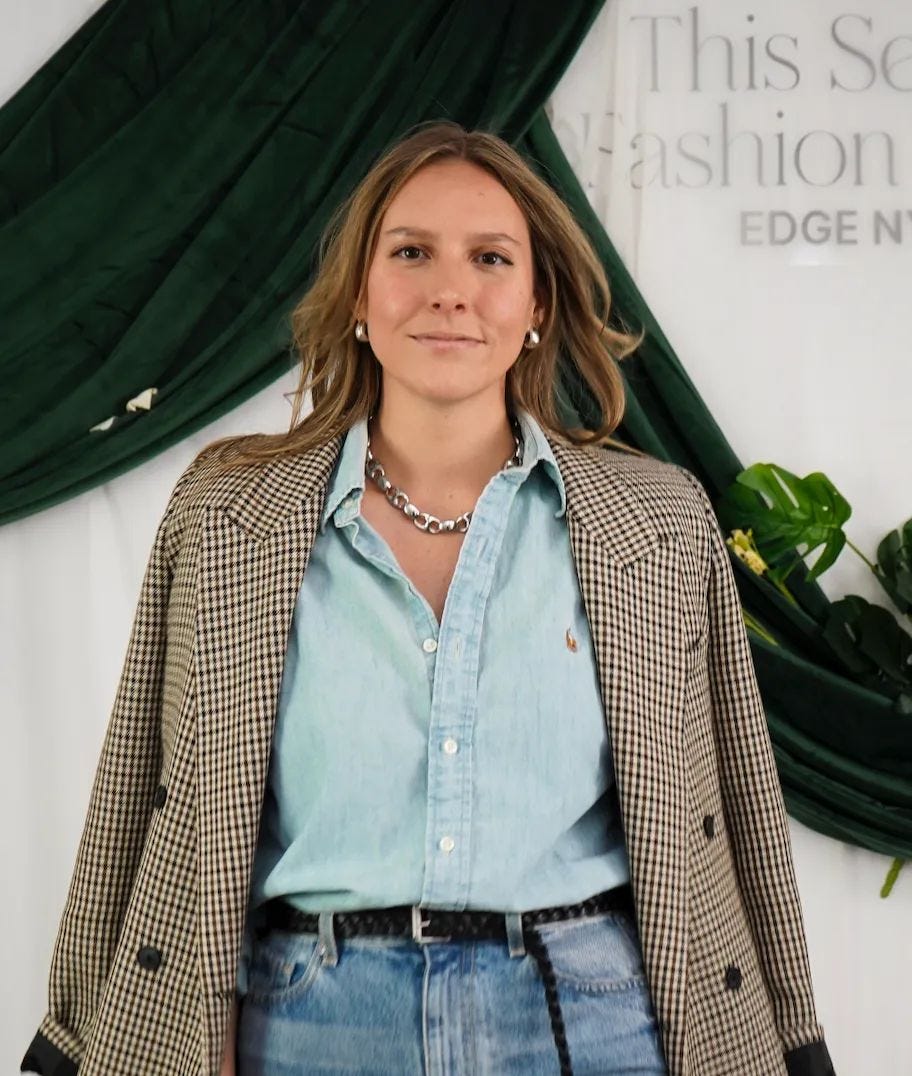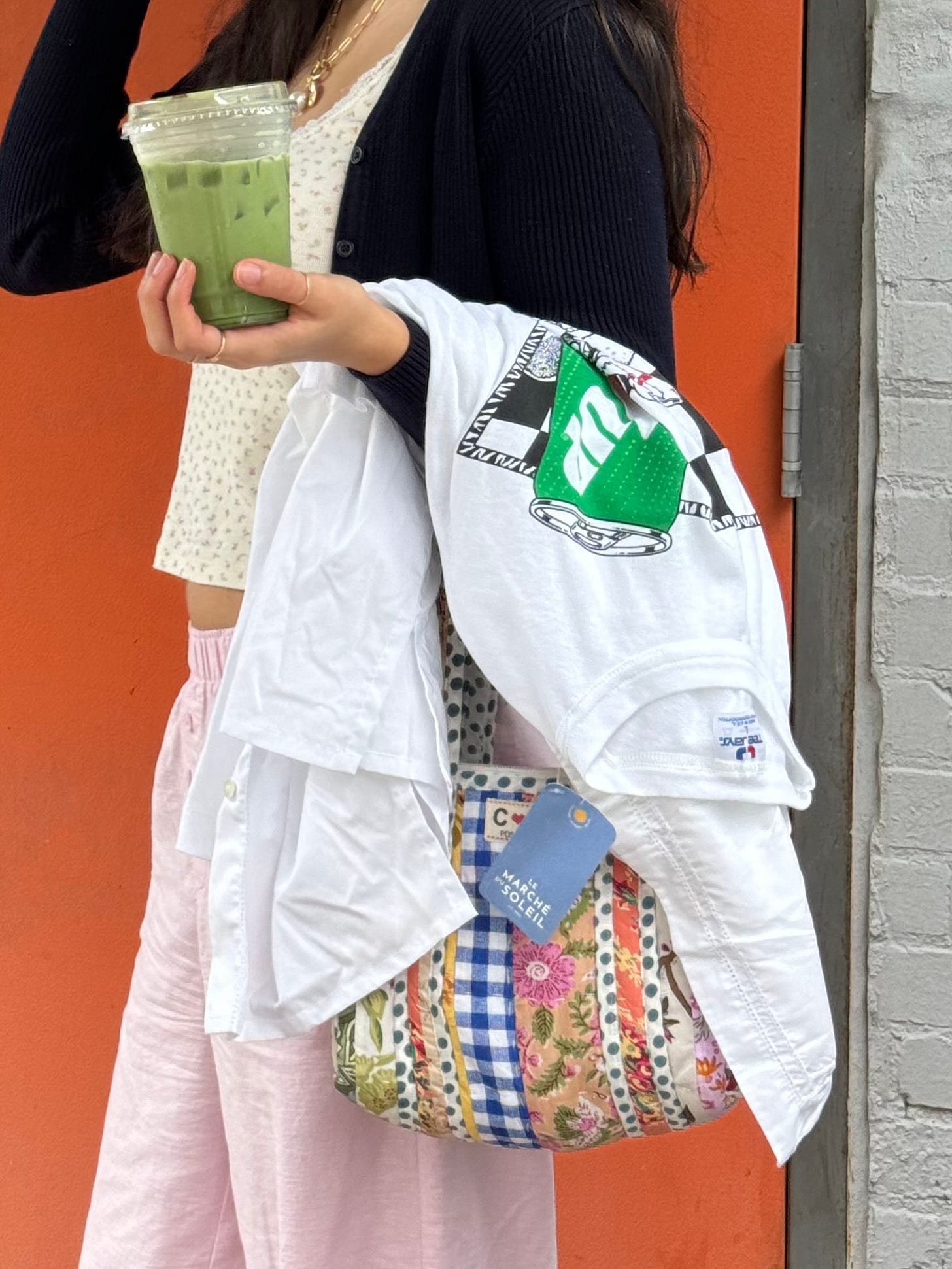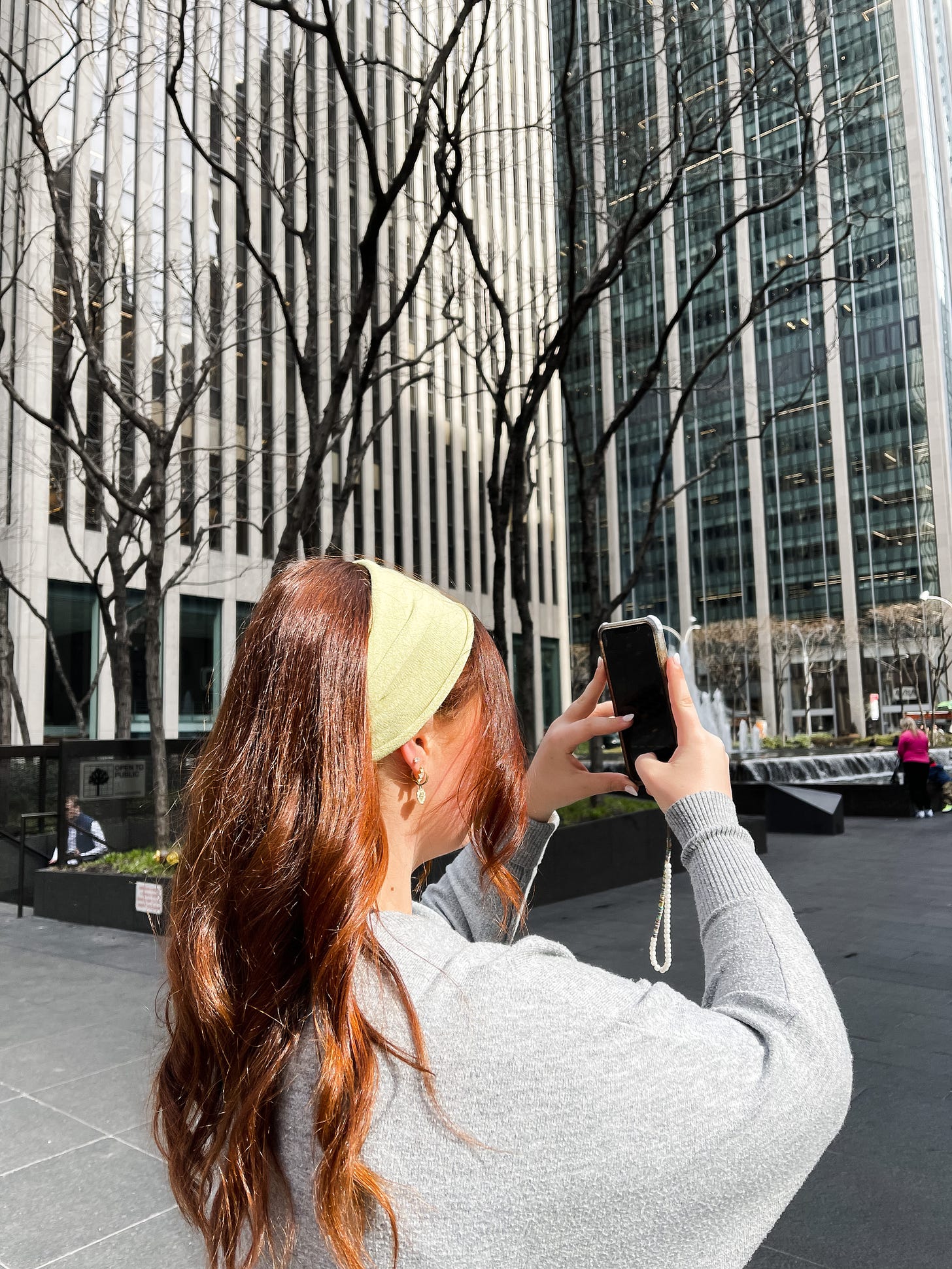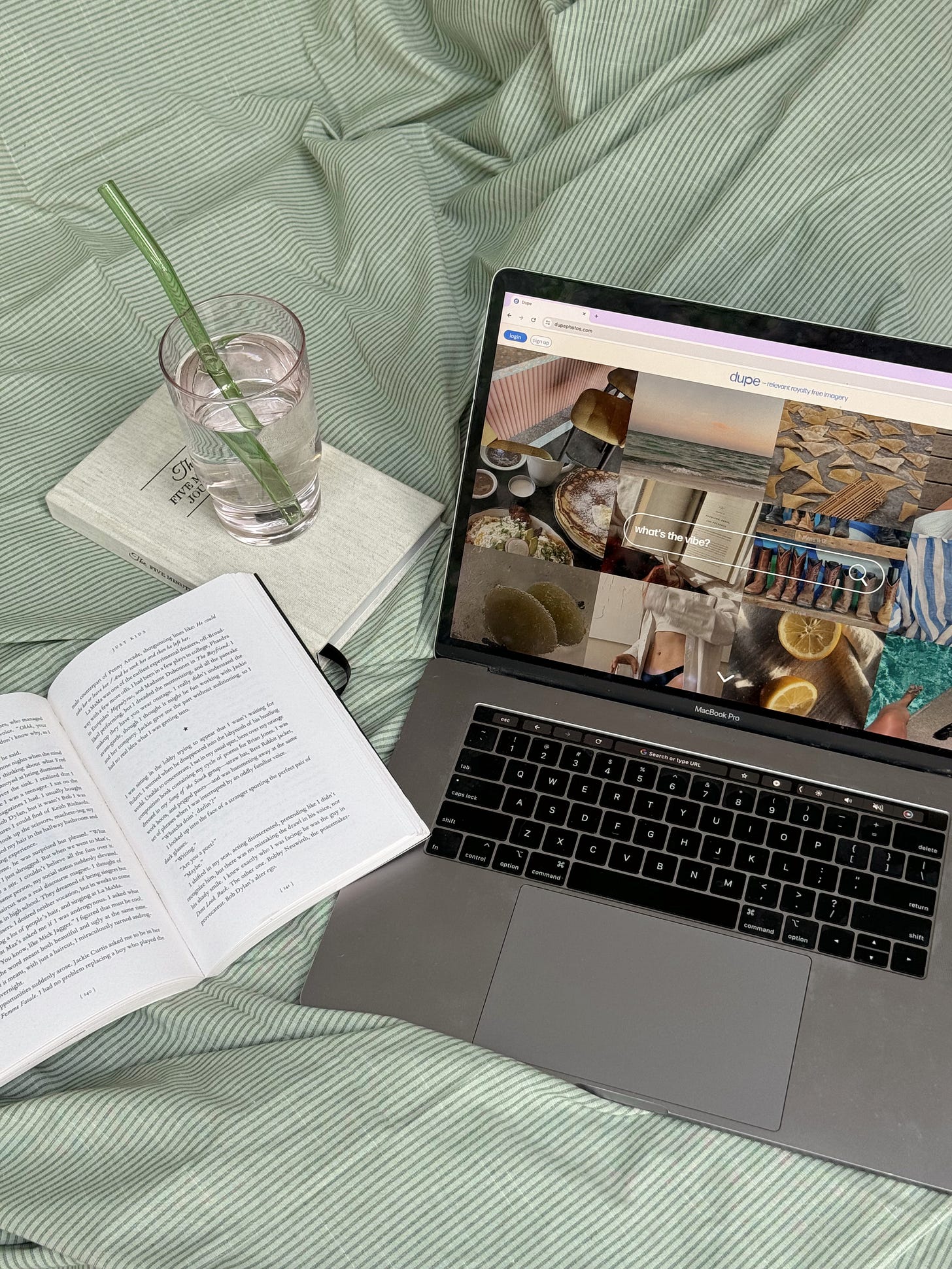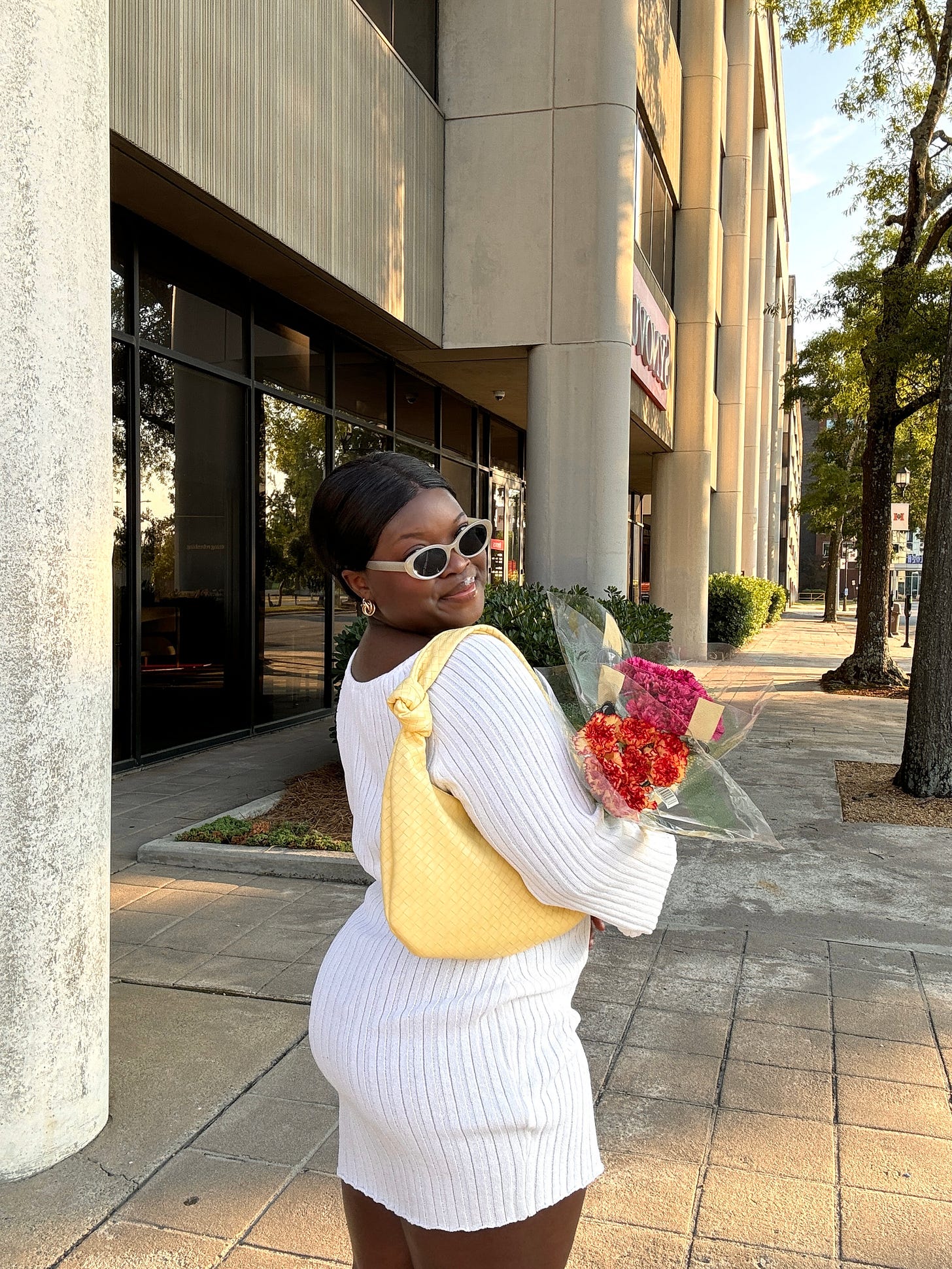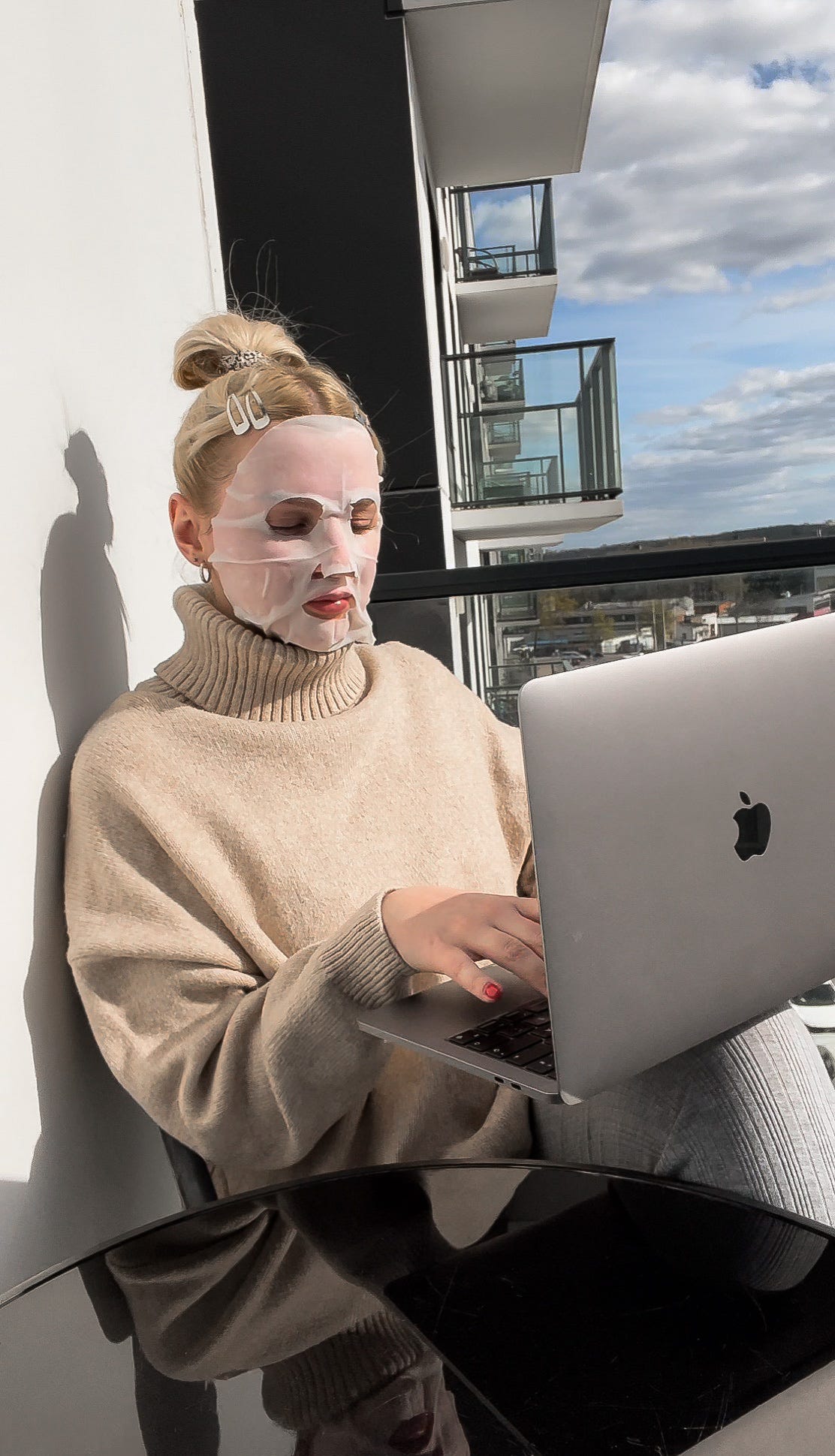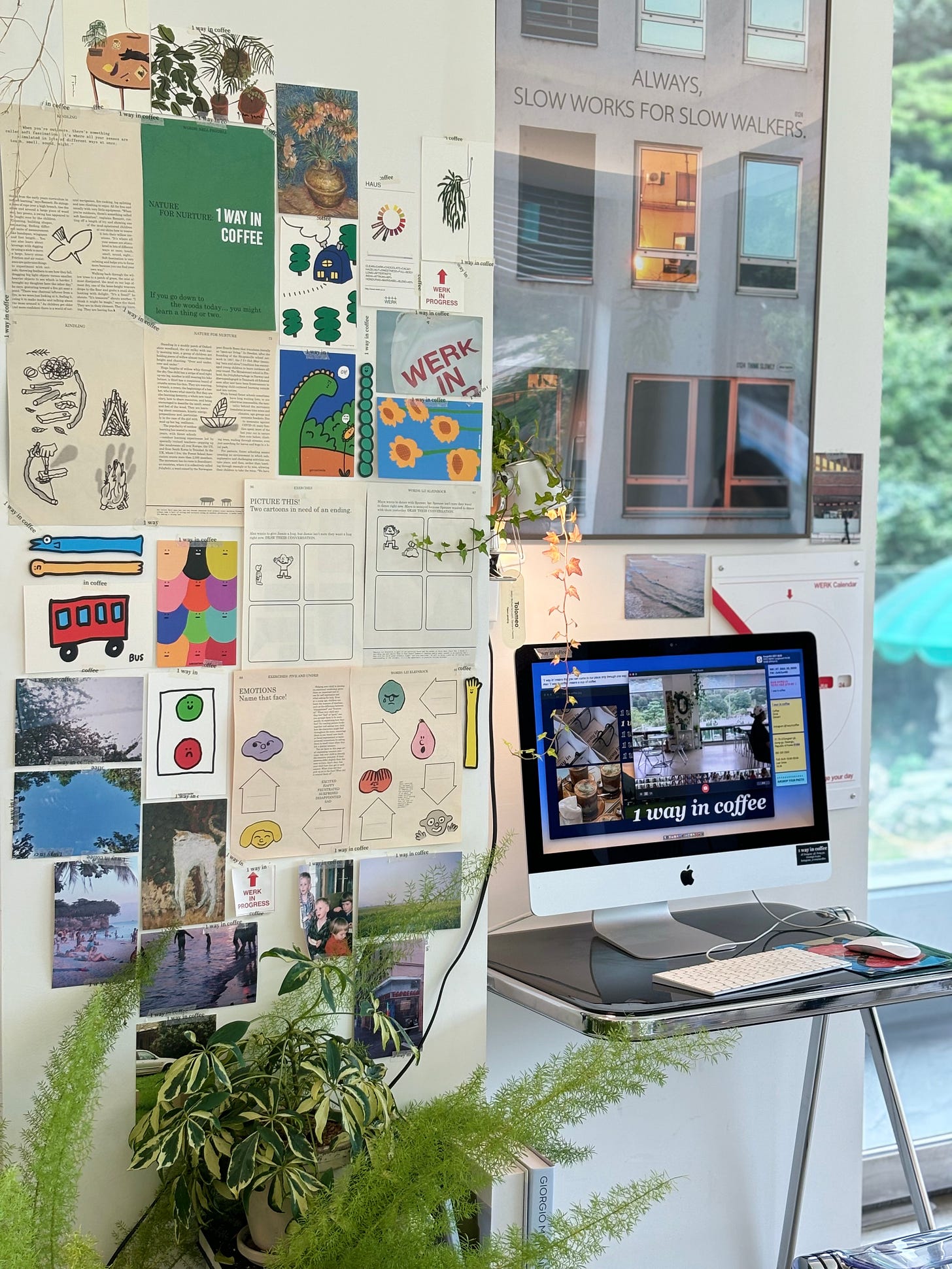Is Your "To Sell" Pile Out of Control?
Claire Illmer, the founder of Future Reference, is making circularity irresistible.
Expert insights and deep dives into what works (and what doesn’t!) in circular fashion, delivered right to your inbox. I’m Emily Stochl and this is Pre-Loved 🎤 an indie media platform about all things secondhand!
Please become a paid subscriber today. Your financial support is necessary to sustainably produce Pre-Loved, and it directly funds our one-of-a-kind reporting:
Raise your hand if you have a “to sell” pile? A chair with a little stack of clothes you barely wear, that you know you should pass on — but the thought of actually photographing, pricing and listing everything feels overwhelming…
We've all been there!
While 58% of buyers now shop secondhand, only 27% actually resell their own clothes. This massive gap between secondhand supply and its demand creates a bottleneck in the circular fashion ecosystem — and it's not because people don't want to sell their items and make some money back on them.
But reselling is a part-time job — props to all the actual resellers doing this hard work! — and most of us don’t have the time. Between researching market prices, writing product descriptions, taking nice photos, and managing listings across multiple platforms (constant pinging notifications in your phone! ack!) it’s a lot to handle.
Our guest today told me the average person spends seven minutes just to create one quality resale listing. Multiply that by a biannual closet cleanout, and you’re looking at hours of tedious work — often for items you’re not even sure are worth the effort.
Enter
, a platform that transforms how we think about — and profit from! — our wardrobes. By pulling historic purchase data directly from your email receipts and automating the resale listing process across multiple platforms, Future Reference aims to bridge that supply-demand gap that's limiting circular fashion's potential.I talked to
, founder of Future Reference about why so many clothes sit unworn in our closets, how “ownership bias” distorts our sense of market value, and what it takes to make resale feel effortless rather than exhausting.…Welcome to “Making Circularity Irresistible” 🎤 with Claire Illmer:
What brought you to create Future Reference?
The idea for Future Reference came from my own experience as an amateur reseller — I was not someone who was doing it professionally. I was frustrated with the time-intensive nature of listing and managing the whole process. I had signed up for Poshmark in 2013, and since then, I had tried every single different platform that came on the market.
I was someone committed to making some money back on what I was buying — and I was buying nicer clothes! — but it was still a really time intensive process.
And then I realized that we have all of this sale data that exists in our email. At one point I just added all that data to Poshmark, basically to save the info while I thought about this. And that’s where the idea come from came from: can we leverage AI, and our emails, to relieve the hassles of selling?
It was really to improve the selling experience out of my frustration.
The other piece was — I worked at ThredUp previously, on the search and discovery product team — and I saw how much the marketplace was influenced by a need to have quality supply.
We were always talking about ‘how do we get more quality supply back into the circular ecosystem?’
The selling side has always seemed like it has a lot of pain points, or just a lot of opportunities — since so many people still don't sell, which is wild to me!
Secondhand shopping has become so mainstream, but there's still so many roadblocks that keep people from selling secondhand…
When I started building, I was talking to hundreds of women — this is a fun story, actually! — when we were iterating on what we wanted to build, we would go to sample sales where there was a captive audience of people waiting in line.
We knew these were people who knew fashion brands, and were value-conscious, clearly. So, we would ask them about their retail experiences, and, like, give out waters in the line!
We kept hearing the same things, basically: what do I sell, when do I sell, and for what price? First there’s the indecision, and people put off cleaning out their closets because it feels like an overwhelming task full of indecision.
Then there's the actual hassle of listing — for example, Poshmark’s form to list an item is twenty-seven fields. We did these exercises where we would watch people put together a really high-quality listing. And, on average, that took seven minutes.
So, you can imagine if you're trying to sell ten things, you're spending over an hour just entering field and entering data into the form’s fields, which just feels like such a drag when you're doing it.
That’s aside from any research involved, or photos — even going out to find the original ecommerce photos takes time.
And then, there’s the hassle of deciding a listing price…
Is the listing price a big hang-up?
Yeah, there's this consumer-psychology element to it — we're kind of fighting these inherent “ownership biases,” where we always think things we own are worth more than they are.
There’s studies on this, but if you hand someone a cup, and tell them it’s theirs, and then another cup is not theirs, and you asked them to name their prices, they would always say that the one that they think is “theirs” is worth more.
We're anchoring on what we purchased items for, but what we spent on something is not necessarily its present market value.
The last pain point, I would say, is knowing where to sell, now that there are so many places to sell. Professional resellers have been using cross-listing tools to post to multiple marketplaces for a long time — and that gets stuff sold. But, the average person isn’t going to pay, you know, $30-50 a month for that type of service. That said, it’s ideal for your item to get all of the potential eyeballs on it that could buy it.
The hassle, we've all experienced! What did you start to notice about indecisivness? How do you aim to solve that?
There's this indecision moment: do I really want to sell this, or not? You kind of face this trade-off where — if you haven’t worn it in a while — what’s the value of this item to me if it continues to just sit in my closet?
Am I going to wear it? Am I going to use it? Or, on the flip side, what is it worth in dollars that I could maybe go use for something else? Whether that be different clothes, or savings, or a trip, or whatever! But, that part [knowing the market value] is research intensive, unless you are really clued in on the resale market.
People aren't thinking about those trade-offs very often, unless you’re actively sorting through your closet and thinking about what you don't wear.
People would tell us, ‘oh I would maybe sell that piece if I got a good offer for it.’ If you could see what you’d get for something, great, but you’d have to go through listing it and getting offers, and then the hassle sets in and you don’t want to do it.
“We're anchoring on what we purchased items for, but what we spent on something is not necessarily its present market value.”
Explain how you make that easier for people?
When you log on to Future Reference, you link your email, and we automatically pull your past purchases into a digital wardrobe from the receipts in your email — we do this securely, we have a Google security clearance. We don’t pull any other data than the receipts and product information.
Once we have all that product information, we can actually show you the value — or an estimated resale value — of your item.
Plus, we can do other cool things like tell you when it’s a good time to sell, show you similar listings — so you can actually make a decision based on what the thing is worth.
It's really about bringing visibility into what you have, and the value of those things, so that you can make more conscious decisions, versus just having things piling up somewhere waiting to be resold. That visibility is proactively pushing you to think about these things, which is something new that the existing marketplaces haven't done before.
What about when you decide to list?
When you list with us — because we have all of that product info from your receipt, like the size, what you paid for it, the product category, even the images that were originally tied to the receipt — we can basically make the listing one click.
We use AI to generate an optimized description, which is trained on listings that sold super-quickly. Of course you can edit it, but we basically take all the information and remove the barriers where it feels like a “whole process.”
The last piece is, we use AI to cross-list your item across multiple platforms.
We just launched our seventh platform, Rowley, which is a pre-loved bridal marketplace. — our top category is dresses, so that made a lot of sense.
Then, we actually manage it on our profiles, so we can act like a professional reseller on your behalf: promoting the items, sharing the items. Each marketplace is a little different, so we help your stuff get maximum reach, and ideally it sells quickly!
We forward you the shipping label, and then you ship it out the same way you would with other peer-to-peer resale platforms, or just like doing a return.
What can we learn from the fact that we don’t properly understand the value of our clothes?
A lot of times people think their things are worth way more than they are, then when they get to the resale process, they’re really frustrated — things don't sell for what their work is worth, as well.
The whole goal is to bring more visibility and more anchoring to market value. If we can show you what we think the value is, and why we think that: here are actual listings similar to yours that exist in the marketplace, here's how they're priced, here are listings that are sold — there's always a difference between what things are listed for, and sold for.
We can anchor you with what your thing is actually worth, because you can see actual listings instead of not knowing, trying to Google it, going through that process and then deciding I'm not going to do this, I'm just going to throw it away or get rid of it.
We’re trying to fight those instincts with data and visibility, at the end of the day.
The secondhand industry wants to bring more quality supply to the market. Why is that such an important part of completing circular fashion’s “circle”?
The marketplaces have the demand, which is great — there's a lot more demand in secondhand right now. People are typically searching for specific items, maybe specific brands. But if the marketplaces don’t have what they’re searching for, that’s just a point for shoppers to drop off.
At ThredUp, I was always working on: how do we keep those people by recommending similar things, or recommending other quality brands that might fit the bill of what you're searching for.
If you don't have the supply to meet the demand, maybe the shopper goes elsewhere, or shops fast fashion, and that's like what we want to fundamentally avoid! By making sure higher quality items are getting back into use, instead of just sitting in the back of people's closets.
What has been a surprising behavior or feedback that you've encountered since launching?
This is a fun one — so, when people sync their email, the way it loads items is actually from oldest to newest. We go back about five years right now.
It's a really interesting experience to watch people look at their old stuff and be like, oh my gosh, did I buy that?! I have no idea where it is. It’s a little bit of a time capsule. That's been really fun — to get people's reactions, and see them really loving the ability to visualize the things that they have.
The other thing is, we launched this interesting feature where you can select whether you want to sell something for the best price — like a specific price, which is how most listings are — and people can still send you offers. Or, we have an option called “sell quickly” where you can actually set a range of prices you’d accept, and you let us negotiate on your behalf.
We'll actually go back and forth, and we’ll try and get you the most, but we can auto-approve any sales that fall within that range. And now 30 % of people select that “sell now” feature, which is quite a bit more than I thought it would be. And those items sell 23 % faster, on average, than people who are only trying best price.
It's an interesting way to just think about the future — where you can train an AI on the way that you negotiate, or the way that you think about resale, and it will go out there and do it for you!
“I think it's natural that your style evolves, and that resale gives you the opportunity to reinvest in the evolution of your personal style, while contributing to a more sustainable ecosystem.”
How do you communicate the benefits of circular fashion with your potential users?
We have thought a lot about this! I think what resonated most is thinking about your wardrobe in the context of evolution and reinvestment, as your life evolves.
Who you were five years ago, is not who you are today. I think it's natural that your style evolves, and that resale gives you the opportunity to reinvest in the evolution of your personal style, while contributing to a more sustainable ecosystem.
Our platform is supposed to bring visibility and transparency to that entire circular process, so from when you buy something and it automatically loads in, you can visually understand what you own. And then we can also remind you: you bought another black dress — but you already have 10 black dresses, so maybe you should think about selling some of those black dresses!
If you have just more insight into your wardrobe, you can make better decisions about what you buy and what you sell.
The hope is that you would look through your wardrobe holistically and we can help you think about being circular all the time, instead of just at these transitionary moments like closet clean outs or spring cleaning or moving to another city.
What is a fashion mindset that you would like to see shift or go away?
I mean, I can't believe anyone’s still buying SHEIN at this point — when there's so much other quality stuff out there, I just can't believe it. I would love to see that mindset go away…
I try to buy exclusively secondhand — not all the time, but I largely buy secondhand — and I do think once you start buying a lot of secondhand, you realize how much more value it retains.
This is me being a little bit of a data nerd, but I think once you realize the resale value of something new — even two years down the line — depreciates 60-70 % the second that you take the tag off; versus when you buy something secondhand and quality, it holds value. You can keep 70-80 % and even resell it after some time.
And honestly, then you just have more of your own money to reinvest in yourself. I know that's a little bit like the “girl math” stock market stuff, which I don't think we should obsess about, but I do hope more people — as they start buying more secondhand — can really see it from a value perspective.
We joke about that at the vintage shop because ‘well, if it doesn’t sell today, it’s just getting older!’
It's just getting older! The value is just going up, as opposed to something new where it's like every day it gets older, it's less monetarily valuable. The best comparison is driving a new car off a lot — instant depreciation.
If you had to make a 2025 trend prediction for the world of circular fashion, what do you think is gonna be shaping the space this year?
It's probably cliche at this point, but I think AI will reshape the experiences on both the buying and the selling side of circular fashion. Most of it won't be super visible, but if you search secondhand a lot, or you're more “embedded” in this type of shopping and selling, I think you’ll see the image search improve. Plus we'll see regular search improve, recommendations improve — and all of that is basically informed by this data layer that makes these experiences possible, increasing the efficiency through AI.
I know I’m nerding-out again here, but that is a lot of what I worked on at ThredUp, working on search and discovery: how do we make our data quality better? And it's just way more possible now. So, my hope really is that it will unlock these experiences that are better for everyone.
Any last things you want people to know?
We launched Future Reference back in November, so we’re very new, but definitely would love people to try it out. I respond to every single piece of feedback that comes in, if anyone has thoughts about how we could do something different or better, I am very much all ears!
Because we're really trying to change the way resale is done.
Thank you for reading! Find me across the internet on Instagram, TikTok, and Threads! 💛 - Emily
Want more ways of making circularity irresistible? Try ‘It’s Still Too Hard to Resell Clothes’ with
& ‘Breaking Our Add-to-Cart Mentality’ with .





